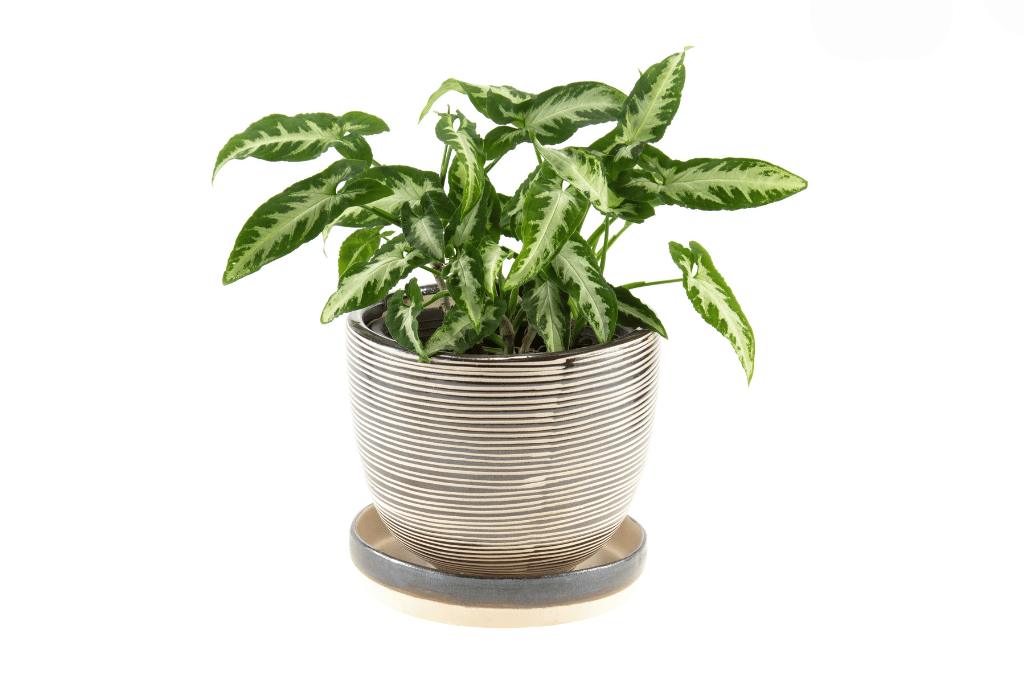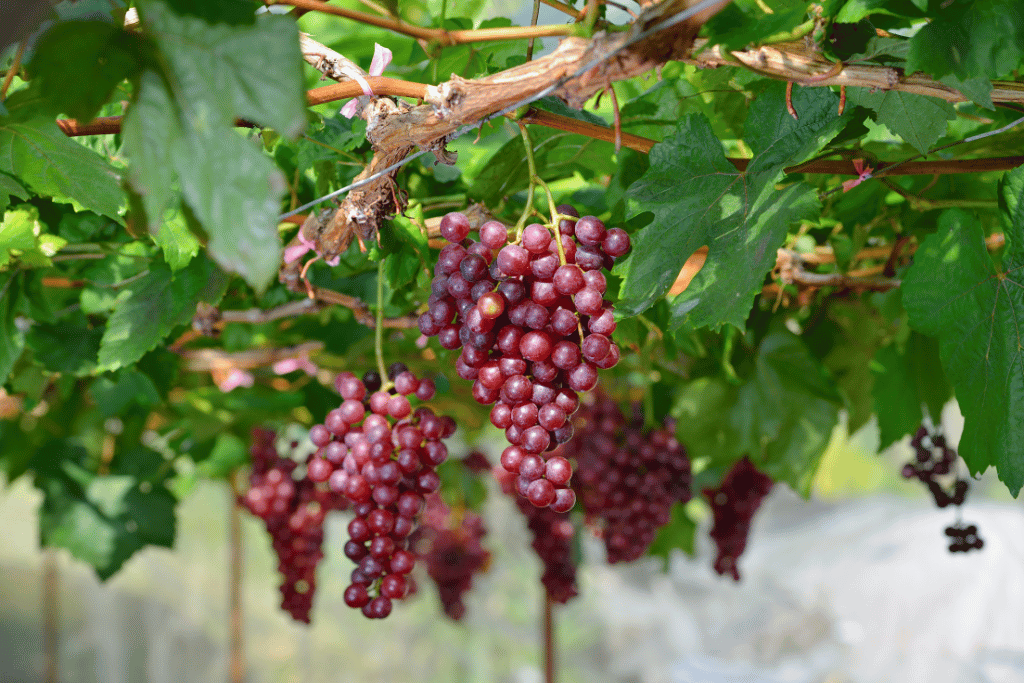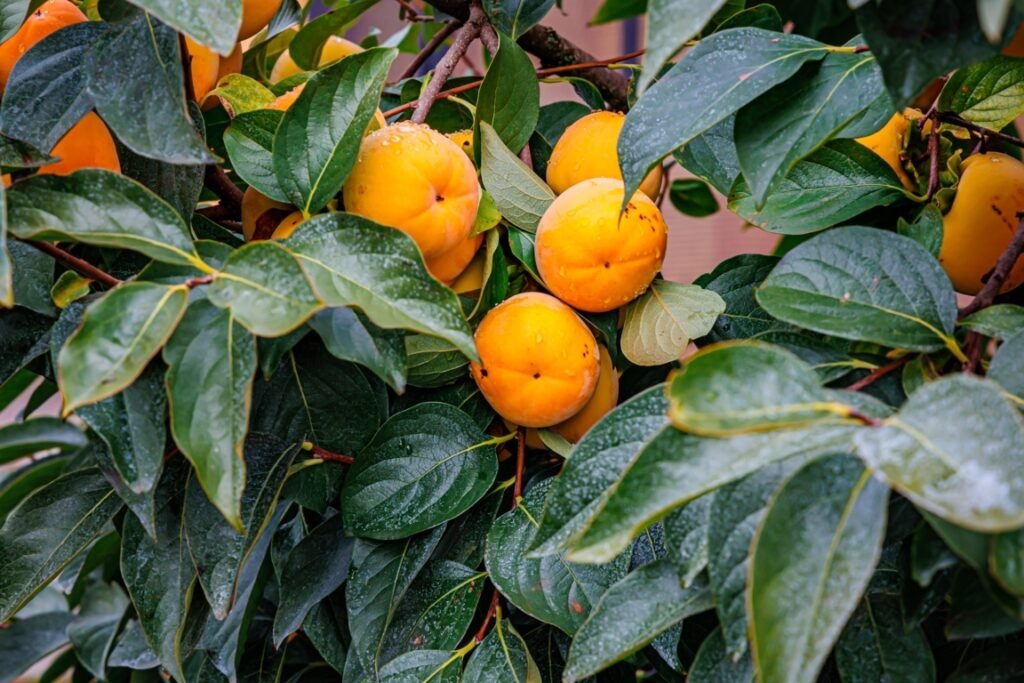
Persimmons are sweet and juicy fruits with different varieties having nuanced flavors. Whether you’re growing them in your garden or wondering about experiencing the taste of different cultivars, the first question should be: when is the persimmon season?
Knowing the answer to this question will allow you to enjoy a multitude of persimmons with unique tastes, textures, and subtleties. But answering it might not be as straightforward as you think. Even though persimmon season is generally from late fall to winter, the exact harvest time varies between species and cultivars.
Therefore, in this article, you will learn about different persimmon varieties and cultivars and when they are in season.
But before moving forward, there’s one more important thing you should know.
Astringent vs Non-astringent Persimmon
Answering when persimmon is in season begins with another question: which type of persimmon are we talking about?
Depending on the ripeness, mouthfeel, and whether they’re ready to be eaten, persimmons are divided into two major categories. Understanding this distinction is especially important when we are discussing when is the season for persimmon fruits.
These two classifications of persimmons are called astringent and non-astringent.
What are Astringent Persimmons?
Astringent persimmons can be eaten once they’re fully ripe, which is some time after picking. These types of persimmons need time to become ripe and soft for a few days after picking. The best time to consume them is when they feel like a water-filled balloon, with a jammy texture and mouthfeel.
What are Non-astringent Persimmons?
Non-astringent persimmons can be eaten even when they’re not entirely ripe, i.e, even when they’re crisp and hard. They can feel like apples when eaten at this time. You can also wait for them to ripen some more until they have a softer and juicier texture.
When is Persimmon Season For The Astringent Varieties?
Astringent persimmon varieties, if picked when fully ripe, can taste as sweet as maple syrup. To ensure they’re at that stage, wait until they’re mushy and soft to the touch. This also makes astringent varieties ill-suited for shipping. However, consuming persimmons that are not fully ripe will have a noticeable pucker factor.
1. Hachiya
The Hachiya cultivar is botanically classified as Diospyros kaki. It is one of the most flavorful, high-quality, and popular astringents, with an acorn-shaped fruit. Hachiya is also the most popular cultivar in California and is grown widely there.
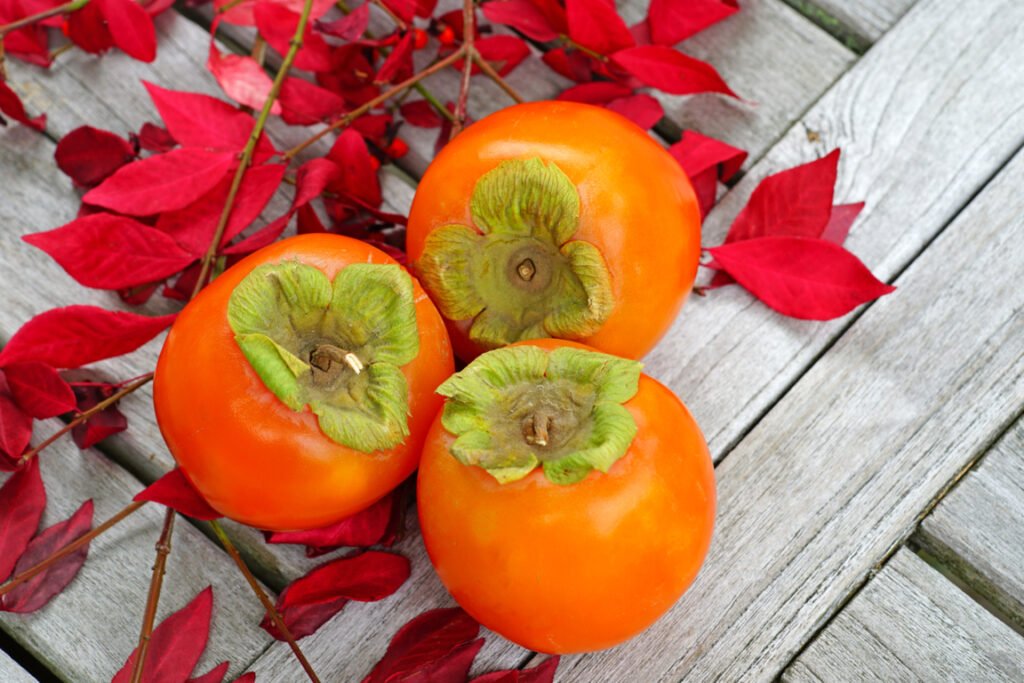
To ensure that you get the best flavor, let the fruit ‘overripe.’ It will give you a sweeter taste than some non-astringent varieties, like the famous Fuyu. It also has a hint of spice in its flavor. The fruits are large, with hues varying between bright orange and deep red.
Hachiya persimmons are in season from mid-October to late November. They are best suited to be grown in the US hardiness zones 7-9.
2. Tanenashi
Tanenashi persimmon, botanically classified as Diospyros kaki(Japanese persimmon), is a popular astringent cultivar and a prolific producer. The name “Tanenashi” translates to seedless since the fruit is nearly seedless when picked.
The fruits are cone-shaped and range from yellow to red-orange, with yellow-orange flesh. The flavor is rich and sweet with minimal pucker factor if ripened fully. Tanenashi persimmons originated from Japan and are relatively heat-tolerant.
Tanenashi persimmons are in season from early October to November. They are best suited to be grown in the US hardiness zones 7-9.
3. Saijo
Saijo, another Diospyros kaki, is famous for its egg-shaped fruits with rich flavor. The word “Saijo” is of Japanese origin and means “the very best one.” The fruits are highly resistant to cold and once ripe, a unique and interesting way to eat them is to pluck the cap off and eat the flesh from the opening.
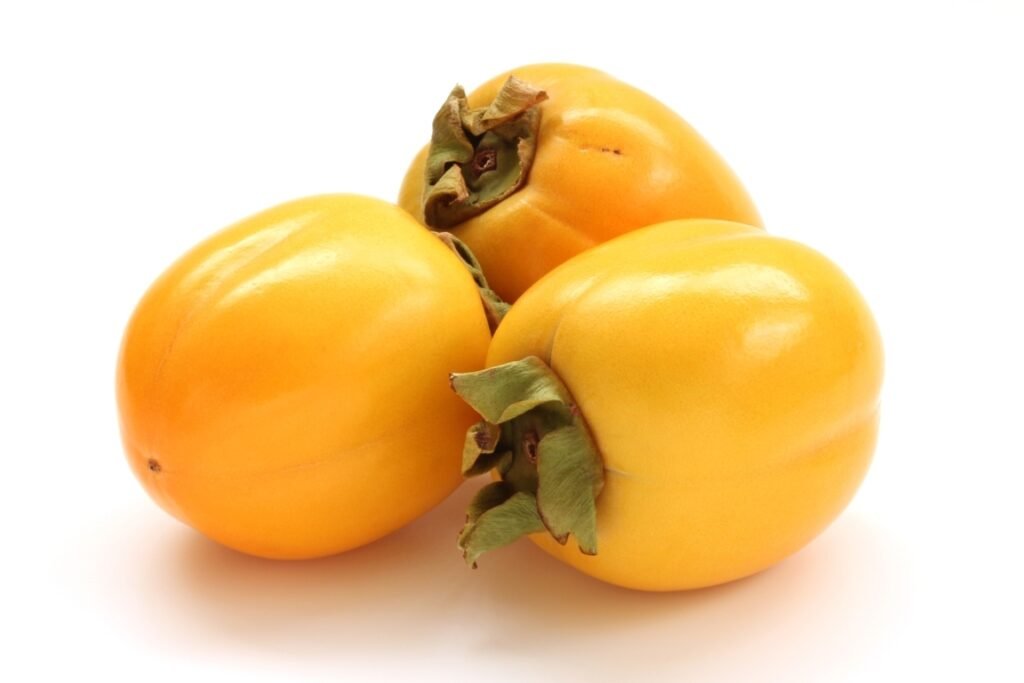
The flesh is sweet, and its flavor has undertones of mango, peach, apricot, and banana, making it a sought-after astringent cultivar. The Saijo persimmon is in season between mid-September to mid-October. It is best suited to the US hardiness zones 7-9.
4. Chocolate/Maru
Chocolate persimmons, also known as Maru, get their name not from their taste but the color of their flesh. These are classified as Diospyros kaki and have distinct brown flesh that is sweet when fully ripe.
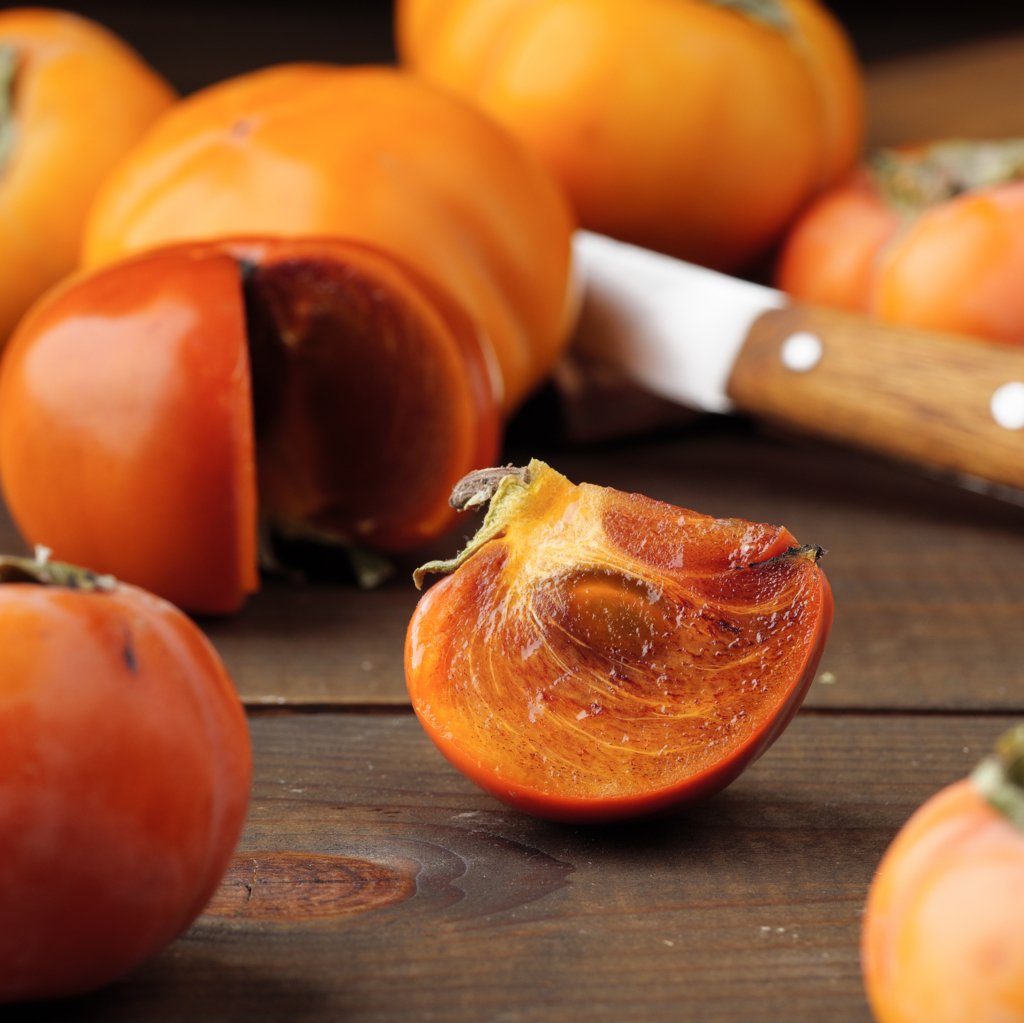
They are a rare astringent cultivar with varying shapes, such as oval, spherical, or slightly flattened. The skin has orange-red hues while also being glossy and smooth. This type of persimmon is in season from late October through November. It is best suited to the US hardiness zones 6-9.
5. American Persimmon
Unlike the various cultivars of the species “American Persimmon” listed above, another persimmon species is cultivated widely in the United States. It’s called “Diospyros Virginiana” and has multiple cultivars.
This species is native to Eastern North America and is harvested in different parts of the US, such as:
- Connecticut,
- Long Island,
- Southern Florida,
- Southern Indiana,
- Southern Ohio,
- Central Pennsylvania,
- Southeast Iowa,
- Eastern Oklahoma,
- Eastern Kansas,
- Central Illinois,
- and more.
Due to this reason, it’s also commonly known as American Persimmon, as opposed to Japanese Persimmon(Diospyros Kaki).
Even though cultivars of Japanese persimmon can be astringent or non-astringent, this is not the case with the American persimmon. All the cultivars of Diospyros virginiana belong to the astringent category. Some of the most popular cultivars of American persimmons are:
- Claypool
- Dollywood
- Early Golden
- I-115
- C-100
- John Rick
- Killen
- Prok
Unripe American persimmons are highly astringent. However, ripe persimmons have an exceptionally sweet taste(even more than Japanese persimmons), with caramel and custard-like texture.
Even though the exact season can vary depending on the cultivar, American persimmons are generally in season from mid-September to December.
6. Some other astringent persimmon varieties are
Giombo: In season from mid-October to November.
Great Wall: In season from late-September to October
Nikita’s Gift: In season from late-October to November
When is Persimmon Season For Non-Astringent Varieties?
Here are some of the most common non-astringent varieties and when they are in season.
1. Fuyu
Fuyu is one of the most popular non-astringent cultivars, belonging to the botanical classification Diospyros kaki. They have an orange color similar to a pumpkin, and the flesh also matches the skin color. Fuyu persimmons don’t have a core or seeds, and they are squat in shape with a tiny green cap at the top. The fruits are also relatively smaller when compared to other non-astringent varieties.
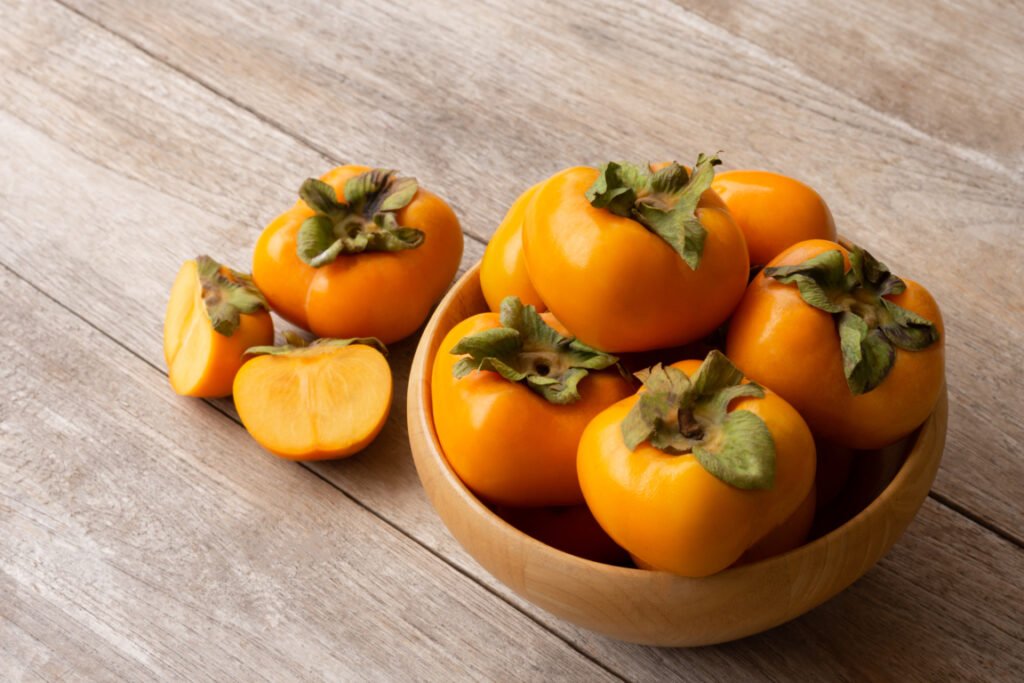
The cultivar is highly sellable and produced in large quantities because it has little to no imperfections. Since it is also non-astringent, it is convenient to be packed and shipped to different parts of the world. The fruit’s flavor has undertones of pear, dates, clove, and brown sugar.
Fuyu persimmon is in season from October through November. It is best suited to be grown in the US hardiness zones 7-9,10a.
2. Giant Fuyu
Giant Fuyu is a type of Fuyu persimmon with a much smaller tree. It is known for being a vigorous cultivar that can withstand harsh conditions. Its fruits are quite large with a red-orange hue.
Giant Fuyu persimmons are in season from late September-October. The preferred US hardiness zones are 7-9.
3. Jiro
Jiro is yet another highly-cultivated non-astringent persimmon cultivar. Classified as Diospyros kaki, it is preferred for its cold-hardiness and nuanced flavor with fruity and spicy undertones. Its fruit turns a red-orange color when ripe and is capped with a green-brown calyx. The fruits are medium to large, ranging between 10-12 centimeters in diameter.
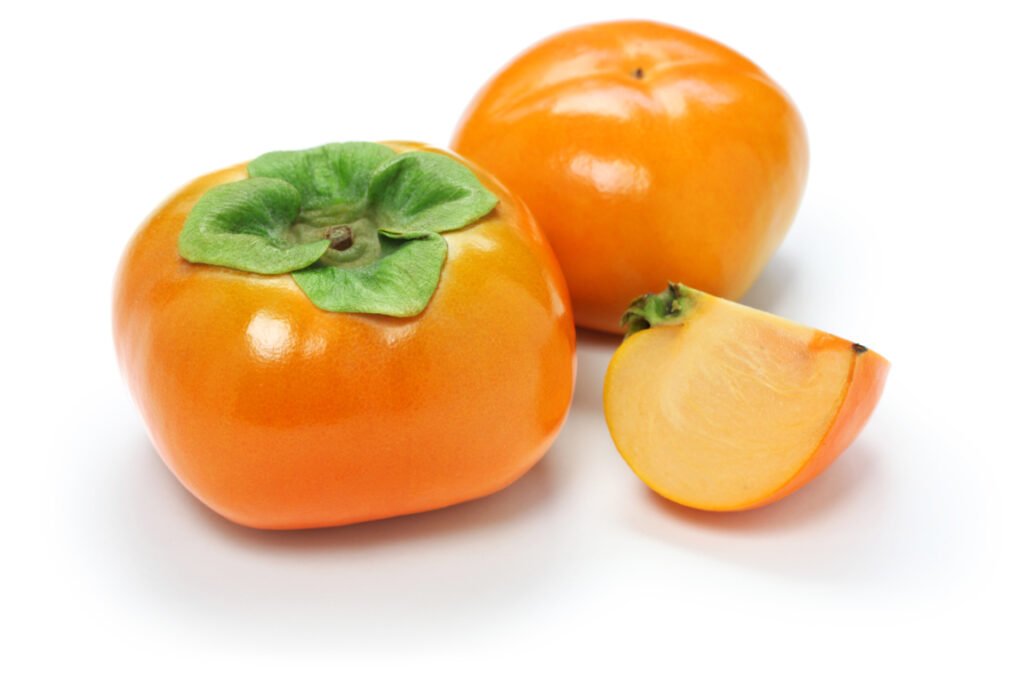
Jiro persimmon is in season from mid-October to mid-November. It is best suited to the US hardiness zones 6-8b,9a.
4. Some other non-astringent persimmon varieties are
Matsumoda-Wase Fuyu: In season from mid-September to October.
Hana Fuyu: In season during mid-October
Maekawa Jiro: In season from mid-October to mid-November.
Ichi-Ki-Kei-Jiro: In season from mid to late-October.
Final Words
Some persimmons are juicy and sweet, while others taste like they have cinnamon blended in with them. Some are crunchy and mildly sweet, while others have a nutty nuance. The key to enjoying all these persimmons is to have them at the right time, and with this article in your hand, you have got that covered!


